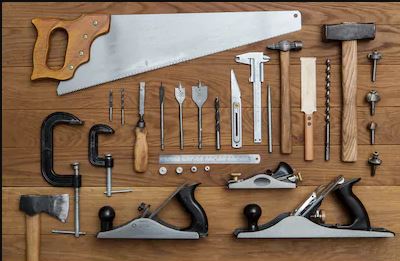
How to minimize the loss in carpentry work product waste?
How to minimize the loss in carpentry work
product waste?
This is important because using resources responsibly is very important.
Carpenters
and joiners have a responsibility towards the environment.
The
responsibility doesn’t lie alone with how the wood is used but also in choosing
the kind of wood to use.
There are many
types of construction timber available and all the different timbers have different
environmental impacts.
The Forestry
Stewardship Council (FSC) scheme certifies that timber (both softwood and
hardwood) comes from sustainable forests and not from the depletion of tropical
rainforests.
Thus always look
for the FSC certification.
Limiting the
waste is good not only in terms of the environment but also would be beneficial in
economic terms.
This is extremely important.
Also one needs to keep in mind that, though natural timber is sustainable to use and dispose of, it doesn’t last very long.
Therefore, it is treated with chemicals, which significantly raise its environmental impact and poses a problem in recycling.
Therefore one must use materials
carefully.
Also, make it a habit to order only what is required.
A high percentage of waste in joinery
comes from over-ordering.
Ordering only what is required would save
time as well as save money.
Recycled wood such as this can be
sold for fuel in factories, while the machine waste is suitable for making animal bedding and for composting.
Another thing to be careful about
is the attention to detail.
Yes, quality is important but by
giving attention to detail you can save up on a lot of material you waste.
This can be made to specified
dimensions.
Because in this kind of wood the
knots and other imperfections are removed
the waste produced is a lot less than conventional wood.
·
Separating the different types of
waste generated goes a long way in careful handling of the waste.
Also, one should aim for reducing the packaging waste because as per estimates 35% of the waste generated comes from packaging.
· Aim to use as few composite boards as possible.
Differentiate between dry and wet rot and learn about the insects that affect only damp timber.
One would thus need to cure dampness and would then be able to avoid many problems.
A lot of waste can be reduced by storing
the materials correctly.
Also, one should be careful in handling
and moving the materials because a lot of damage is caused to the wood during
this process.
Also, what is mostly overlooked is theft
and vandalism of the timber during storage.
So be careful about who is handling it.
Carpenters and joiners have a responsibility towards the environment.
Easy Nirman Construction was Never Easy Before Us









No Comments yet ...